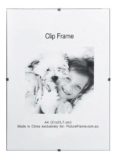![]() Just about every other time we answer the phone we are greeted with a "I found you online!", or,
Just about every other time we answer the phone we are greeted with a "I found you online!", or,  " I found your picture frames online!" , as the introduction to a Customer's telephone inquiry. While this is stating the obvious, users find us online because we have a web site, because its contents are published online, because search engines display these, and thence people find it! What is not so obvious are the many, electronic, processes, protocols and procedures used to make all this possible. In this post we will endeavour to explain what and how this works. Perhaps the very first step is to fire up one's PC, load up one or more programmes and then create web pages .. . This is done by writing them up in HTML code with a text or HTML editor programme and saving them locally on one' own computer.
" I found your picture frames online!" , as the introduction to a Customer's telephone inquiry. While this is stating the obvious, users find us online because we have a web site, because its contents are published online, because search engines display these, and thence people find it! What is not so obvious are the many, electronic, processes, protocols and procedures used to make all this possible. In this post we will endeavour to explain what and how this works. Perhaps the very first step is to fire up one's PC, load up one or more programmes and then create web pages .. . This is done by writing them up in HTML code with a text or HTML editor programme and saving them locally on one' own computer.
The pages and their contents are then uploaded via specialized programmes like FTP, to hosting providers, or hosts. These hosts are are technology companies with big, powerful computers sectioned or partitioned in many smaller spaces, or accounts, for lots of clients.
Think of a big hotel with hundreds of rooms rented out to guests. The hosts' have computers called servers, since they serve users' requests, and are online all day and all night, 24/7. The servers the load all their client's website contents online where these are later crawled and indexed by search engines like Google, Bing and others.
Our own website: Pictureframe.com.au, functions mainly as an online store which is a collection of website pages with products for sale in them which people can see when published online. Store visitors and online users visit our pages, review the published information, and may opt to buy products by adding these to the cart, checking out and paying for the purchases.
While the above work-flow skeleton outlines, so to speak, the mere bones of the selling of goods online, just as important are the technologies, methods and organizations involved in the online advertising of store products, such as our picture frames.
For instance, and the time of writing, the screenshot below shows the various information results and Google Ads advertisements returned when a user enters the search term: 18"x24" black wood poster frames . We note the several advertisements in the first SERP ( Search Engine Results Page) both for our own website and others'.

Again with the above screenshot in mind, we may note two main types of advertising display, one being the paid PLA (Product Listing Ad) and the other, the free, Organic Listing . The distinction is important. and for different reasons.
The former is a straight out commercial transaction, advertisers pay Google to display their advertisements, the latter is a free display listing which Google display at no charge. Both displays show the websites' product thumbnail with description snippets.
If users click on the PLA they will be taken to the advertiser's website to view the product, Google will log the interaction and then charge for the click. If users click on the free organic listing display, much the same will happen, but the display's publisher will not be charged for the click.
How all this is created, configured and rendered is the core of the internet and the world wide web. It is the sum of the additions of dozens of technologies and hundreds of actors interacting in dozens of computer languages. These addends and sums mesh together for the immediate, synchronous browsers' renditions of the everyday static and dynamic web pages users visit every day.
When Customers say they "found" something on the internet, usually it is not a snippet of text buried in the 20th page. More often then not is a product thumbnail ( Product Listing Ad) prominently displayed in the 1st page.
This is the Holy Grail of all business owners, webmaster and their SEO counterparts because being listed in the 3rd, or even the 2nd page hardly matters since hardly anyone drills down to those pages.
And how those product thumbnail images get SERP'ed ( Search Engine Results Page ) on ( usually ) Google's first page isn't just by paying the highest search word bid. Google is not as venal but far more discerning than that.
The initial step in having Google publish a re-seller, retailer or merchant's advertisements is to allow it to verify who the would be merchant is. Next, its Google bots will crawl the applicant's site and if it finds any content contravening its policies it will preclude any advertising for or with it.
After verification, the creation of an account with their Merchant Center is required. Applicant Merchants can expect to provide Google with much personal and business confidential information including a Credit Card used for automatic monthly account debiting.
Once the account is created, a special data file called a Product Inventory Feed also needs to be created and uploaded with sufficient, valid information about the Merchant's products which must comply with all the required feed specifications and attributes. Failure to meet even one of the required attributes will result in some or all products being disapproved and rendered ineligible for display, or publishing online.
Once the data feed file is uploaded and the intended products for display advertising approved, then a disparate account must be created with Google Ads. Once approved merchant can the create, edit, pause or cancel advertising campaigns. These are quite complex, detailed and sophisticated. Much criteria can be selected down to a single suburb, town, city, Postcode, region, State or country.
Other optional, selectable advertising metrics include bidding, cost per click (CPC) goals, Return On Investment, values , users' ages, sex, locations, and many more other variables and cohorts. The Ad campaigns also permit and allow for highly customizable budgeting, bidding, scheduling, distribution networks and much more.
It is then up to an advertiser how much to spend per click on selected keywords and products such as picture frames online. So far as our own campaigns are concerned, we monitor them carefully and regularly the cost for conversion, this being the number of users' clicks multiplied by the average CP and divided by the number of conversions.
Thus if the Product Listing Ad for our A4 Black Wood Certificate Frame (suits 21×29.7 cm paper) with (CP) Clear Plastic and Stand was clicked on 120 times at an average of $.19 x click resulting in 5 conversions, that works out at $4.56 x conversion. This might seem a lot for a $4.25 frame until this value is evaluated against the mean average online order for this item which is around $143.

In addition to monitoring their conversion indices, or cost per conversion per product, advertising merchants need to monitor unnecessary, superfluous and wasteful keywords, labelled "negative" keywords which users and visitors enter or submit each day. For instance, and in our case, a user with a non-Australian , or overseas I.P. address searching for a Basketball Clear Acrylic Display Case need not have our Ads displayed because we do not accept orders, or ship products, outside of Australia.
As an additional example, users outside the State of Victoria searching for, say, an A0 Raw Oak Wood Ready-Made Poster Frame with Clear Glass also need to be prevented from viewing Ads for this product because this particular large frame is unshippable and available only as Customer Collect to Victorian Customers.
And, as a last instance, users or visitors searching for say, "cheap poster frames near me" also need not view or Ads. With around 16,674 Postcode listed for Australia, the chances of searchers residing in our Postcode 3189 are 1 in 16,674, to which we say, no thanks, we'd rather not pay to fruitlessly showing them our Ads.
We haven't covered all the aspect and angles in the display advertising for picture frames online, for instance omitted the Microsoft Advertising with Bing, which, by the way, is a clone or duplicate of Google Ads.
It will suffice to say that when people say "I found you online", this is as a result of assiduous, applied SEO experiences, professional developmental and technical skills with wise, business investments of advertising merchants rather than by mere of fortuitous happenstance.
More information on this subject may be found in our recent post: Seek and you shall find … ( but only if done correctly . Thank you for reading our post: " I found your picture frames online!".








